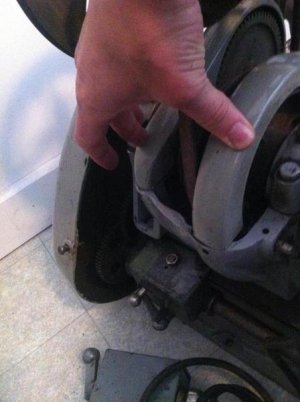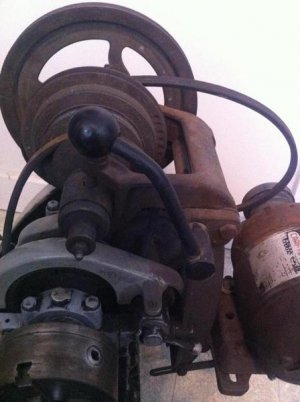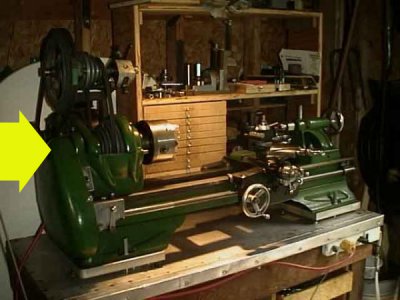- Joined
- Dec 25, 2011
- Messages
- 10,552
Jake,
OK. When that happens to me, I answer the most recent one first and then do Reply with Quote for the earlier one(s) (and delete anything I'm not going to comment on).
Without a serial number, or the original invoice, I'm afraid that you're not going to pin it down to the closest year because the same machines were usually made for several years. I did just notice one thing, though. Photos of the early machines all show an oval ON-OFF switch bezel and matching mount in the headstock casting. Later the bezel and the casting changed to rectangular (like yours). The 1947 catalog shows only the rectangular one and only Timken bearings. The 1945 shows mostly rectangular but a couple of photos have the oval, although they are not of complete lathes. The 1941 shows only the oval. I have an L43 somewhere around here. When I locate it, I'll see what it shows.
Robert D.
OK. When that happens to me, I answer the most recent one first and then do Reply with Quote for the earlier one(s) (and delete anything I'm not going to comment on).
Without a serial number, or the original invoice, I'm afraid that you're not going to pin it down to the closest year because the same machines were usually made for several years. I did just notice one thing, though. Photos of the early machines all show an oval ON-OFF switch bezel and matching mount in the headstock casting. Later the bezel and the casting changed to rectangular (like yours). The 1947 catalog shows only the rectangular one and only Timken bearings. The 1945 shows mostly rectangular but a couple of photos have the oval, although they are not of complete lathes. The 1941 shows only the oval. I have an L43 somewhere around here. When I locate it, I'll see what it shows.
Robert D.



